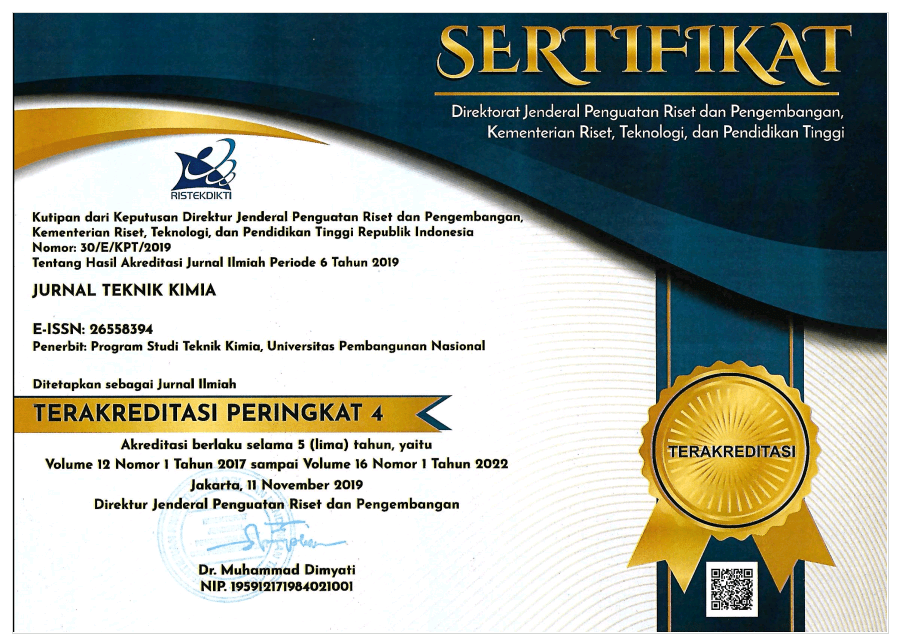ISOLATION STUDY OF EFFICIENT α - CELLULOSE FROM WASTE PLANT STEM MANIHOT ESCULENTA CRANTZ
Abstract
Waste Manihot esculenta Crantz stems of plants is one of the waste has a high cellulose content. However, current waste plant Manihot esculenta Crantz stems only become organic waste that has not been fully utilized. The study is expected to utilize waste Manihot esculenta Crantz plant stems to produce α-cellulose can be used for paper and solve the problem of the environment especially forests. Waste Manihot esculenta Crantz plant stems as a raw material containing fiber 65.38%, 29.01% leather waste, waste cambium levels of 5.61% and 56.82% α-cellulose. Stages of research to produce α-cellulose include prehidrolisis stage, the stage of delignification, bleaching stages, and analysis of α-cellulose. At this stage delignification used NaOH, Na2SO3, Na2SO4 with varying concentrations of 5, 10, 15, 20, 25% by weight as degrading lignin which is then followed by bleaching stage using H2O2 2% and 5% NaOCl to get a pure α-cellulose. The best results with α-cellulose content of 90.41% in the delignification process Na2SO3 with 20% using 2% H2O2 bleaching.
Key words: Waste Plant Manihot esculenta Crantz Trunk, delignification, bleaching, α-cellulose

This work is licensed under a Creative Commons Attribution 4.0 International License.
Pusat Publikasi | Teknik Kimia | Fakultas Teknik (Gedung Giri Reka ) | Universitas Pembangunan Nasional "Veteran" Jawa Timur, Indonesia
Jln. Raya Rungkut Madya, Gunung Anyar Surabaya, 60294 Email : jurnaltekkim@upnjatim.ac.id








